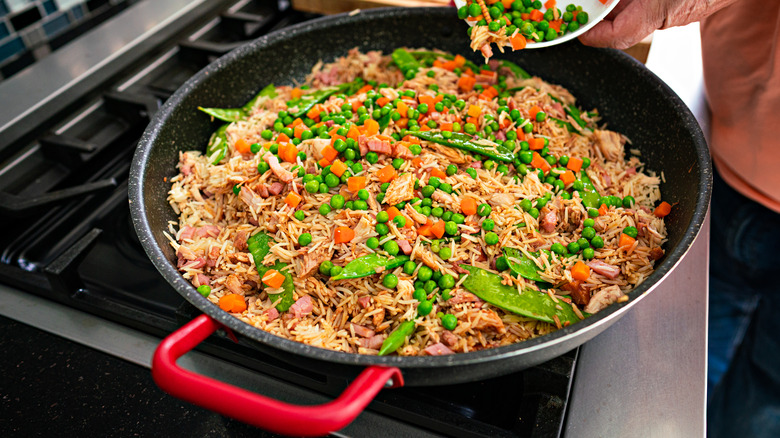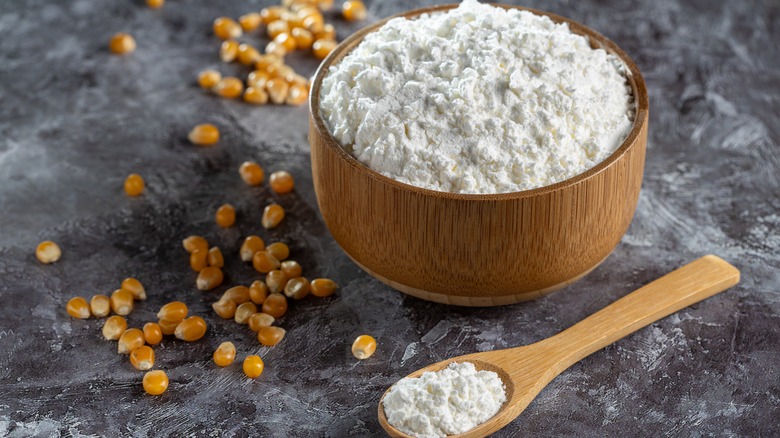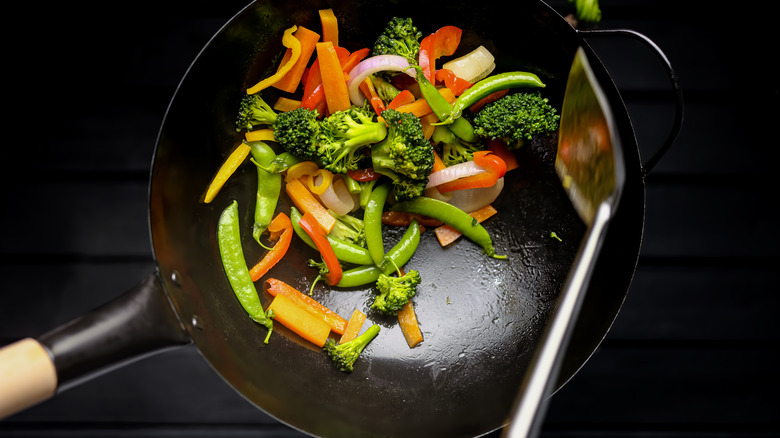Cornstarch Is Your Secret For Fried Rice With Just The Right Texture
Fried rice is a quintessential part of many a takeaway dinner. In fact, some menus have an entire section dedicated to variations of this classic dish. And myriad variations there are. From tasty seafood and meats to vegan options, fried rice happily embraces just about anything your refrigerator can throw at it.
While its presence is ubiquitous at any Asian restaurant, you don't have to make a reservation to enjoy this tasty goodness. On your own stove, fried rice makes a great partner to your other favorite takeout items you can make at home, and it's just as good as a stand-alone main dish on a busy weeknight. While there are several tips and tricks that will help you convert plain white rice into a flavorful and robust party for the palate, you may not know that cornstarch could be the secret ingredient you've been missing while seeking to achieve the perfect texture for your fried rice.
So what's the cornstarch secret all about?
There are copious ways cornstarch is used in cooking, from locking moisture into meat to thickening sauces, but this little hack serves a purpose beyond those traditional roles. Author and chef J. Kenji López-Alt suggests adding cornstarch into the fiery wok of fried rice ingredients — apparently, a dash of cornstarch can keep your rice from clumping (per YouTube).
Now that you know the end goal, let's take a step back. For the best fried rice at home, you want to start with leftovers. Really. It's widely accepted that day-old rice works best in the wok. Whether you've made your own rice or you're looking to jazz up yesterday's abandoned white rice side dish from your local haunt, López-Alt recommends spreading it out on a tray before refrigerating. This allows the grains to release moisture and dry out.
However, if they don't crumble apart after the next day, López-Alt suggests giving your rice grains a dusting of cornstarch. Then use your fingers to 'fluff' them, mixing the cornstarch into the rice as you go. The idea is that as the cornstarch coats the rice it encourages them to separate, which is essential for achieving the desired texture for your finished dish. Clumpy or sticky rice, in contrast, won't perform the same since the wok won't have access to all surfaces on each grain. So, if your rice is too sticky, employ the cornstarch before putting it on the heat.
A walk through wok basics
In addition to seeking out properly prepared rice to start with, making the best use of your wok will also elevate your homemade fried rice. After all, you don't want fried rice that's sticky, pasty, or greasy. To get that restaurant-quality texture, start with a very hot wok. Focus the heat on the center of the pan, but keep the wok moving as you cook, or the ingredients will burn. With each batch of vegetables, meat, rice, or eggs, heat the oil before tossing the ingredients in.
Another wok essential — don't overfill your pan. Those ingredients need room to dance as they cook. Give them the space to boogie by cooking rice and other ingredients in batches. The goal is to let every surface come into contact with the hot wok, and that won't happen with too much food in the pan. Also, use your wok to ensure all the ingredients are cooked to the same doneness. To avoid too much crunch, cook raw ingredients first and set aside. Similarly, allow frozen veggies some time to thaw at room temperature before adding them to the mix.


